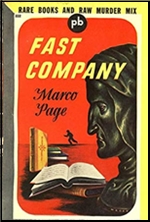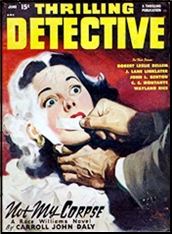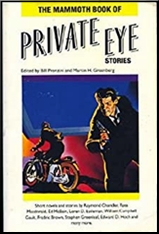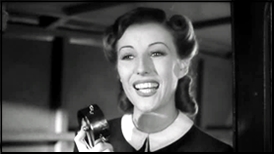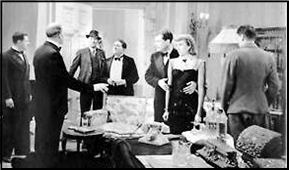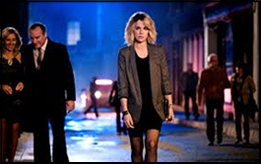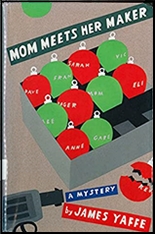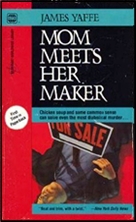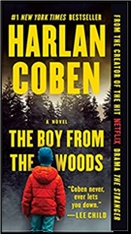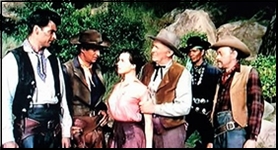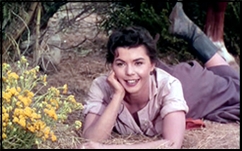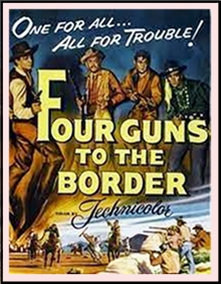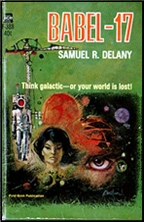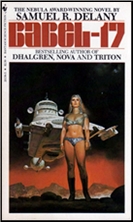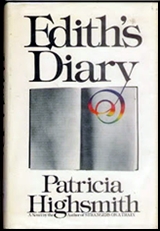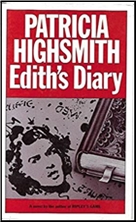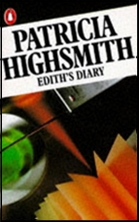REVIEWED BY DAVID VINEYARD:
JOHN WELCOME – Run for Cover. Richard Graham #1. Faber and Faber, UK, hardcover, 1958. Knopf, US, hardcover, 1959. Perennial Library, US, paperback, 1983.
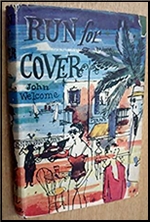
“I’ve got something here for you right up your street,†he said. “Cloak and Dagger stuff. Needs working on but I think there may be a book in it … Read it for me… it’s by someone I never heard of, chap named Rupert Rawle.â€
I stopped dead in my tracks.
“Rupert!†I exclaimed. “Rupert Rawle! But he’s dead!â€
A chance meeting with a publisher friend opens the door to the past for Richard Graham.
Richard Graham, gentleman steeplechase jockey and one time commando, has good reason to think Rupert Rawle dead. Rupert Rawle betrayed his Commando Unit in the War on a mission, shot Graham and left him for dead, leaving him to eventually ending up in a POW camp. Rawle also stole a beautiful woman from him, one he might have been in love with.
But here is someone named Rupert Rawle who has written a book called Waters of Strife.
For Richard Graham its an invitation to a nightmare to relive those desperate days, find this man calling himself Rupert Rawle, and uncover secrets better left buried, secrets some will still kill for.
For instance why are they so curt when Graham tries to check with old sources from his Commando days. Rawle is dead. Rawle is most certainly dead.

But is he?
Granted this was a favorite plot of the time period in the decades after WW II, what was heroism, who betrayed whom and when and why, even who is dead and who isn’t? It shows up in the works of dozens of British thriller writers and in films, but it is done really well here in Welcome and Graham’s debut.
Held prisoner in a French farm house while tracking down Rawle, Graham exchanges a bit of banter with his captor.
“You’re a strange chap, Graham, I didn’t think your sort could read.â€
“I’m a throwback to the Thirties, the last of the literary toughs. You ought to hear me quoting Proust in the weigh-room.â€
John Welcome was well placed to write about literary toughs. In addition to editing several books of the best racing stories he also edited two books of the best Secret Service adventures. A literary solicitor, he knew Dennis Wheatley and encouraged Dick Francis to take up thriller writing. On his own he wrote a number of Richard Graham adventures and stand alone titles between 1959 and the 1970’s and a few best sellers in England in the R. F. Delderfield vein (Bellary Bay).
Hunting for Rupert Rawle, Graham uncovers an espionage plot, a beautiful and mysterious woman, and finds himself with a choice between his career as a gentleman rider and as a spy.
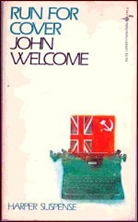
Welcome keeps tongue ’n cheek without ever getting silly or precious. He doesn’t take himself or Graham too seriously. Trapped in second story bathroom Graham checks out the window as a means of escape and decides while Dornford Yates’ Richard William Chandos might try it, he would likely break his fool neck.
Barzun and Taylor were appreciative of Welcome’s books, and with reason. They move fast, are well written, literate, and the kind of pleasant thriller perfect for an evening of armchair adventure and intrigue.
I hated Rupert. I should have killed him. I had a gun in my pocket. And the world would be well rid of him and I would have laid a twelve year old ghost. Or did I really hate him? No dammit, I didn’t. The old spell was there again.
There are several mentions of Dornford Yates in the book, and it is not without meaning. Welcome has captured something of the romance of Yates’ best books without the snobbery or attitudes. Graham is more attractive than Yates heroes (Rawle ironically sounds more than a bit like Jonah Mansel), far less certain of his British superiority, but Welcome has captured the same romance of expensive British cars rushing about on the Continent with dashing heroes involved in adventure and intrigue.
Appropriately Run for Cover ends with an act of contrition and sacrifice as Graham has a reckoning with his past and his future, a good modern thriller with something of the charm of the past and few of its more annoying tropes.
By all means this isn’t for everyone, but if you like this form of British thriller done well Welcome will be… welcome.
The Richard Graham series —
Run for Cover. Faber 1958.
Hard to Handle. Faber 1964.
Wanted for Killing. Faber 1965.
Hell Is Where You Find It. Faber 1968.
On the Stretch. Faber 1969.
Go for Broke. Faber 1972.
